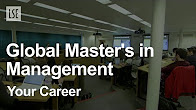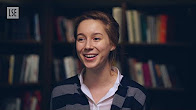 3:17 You Might Get Fat Just By Smelling Your Food The nose's olfactory receptors are stimulated when we smell food and other odors. But could the process of smelling cause weight gain?
3:17 You Might Get Fat Just By Smelling Your Food The nose's olfactory receptors are stimulated when we smell food and other odors. But could the process of smelling cause weight gain?Why Did Our Early Ancestors Resort to Cannibalism? - https://...
 3:29 Yes, Sperm Counts Are Plummeting... And Scientists Are Worried According to a new study, sperm counts in men from western countries have dropped by over 59% in the last 40 years. Scientists are in disbelief.
3:29 Yes, Sperm Counts Are Plummeting... And Scientists Are Worried According to a new study, sperm counts in men from western countries have dropped by over 59% in the last 40 years. Scientists are in disbelief. Scientists Want to Insert Bionic Sperm Into Wome...
 3:10 Does Your Dog Respond Better When You Use a Baby Voice? Most people make their voices higher pitched when talking to their pets. But does this Pet-Directed Speech have any influence on animals?
3:10 Does Your Dog Respond Better When You Use a Baby Voice? Most people make their voices higher pitched when talking to their pets. But does this Pet-Directed Speech have any influence on animals?How Bilingual Brains Perceive Time Differently - https:/...
 4:19 How Many People Have Died in Space? Space is an incredibly dangerous place. Between the explosions during launches, reentries and transit, how many people have died in space? It's probably less than you think. How Quickly Did the ...
4:19 How Many People Have Died in Space? Space is an incredibly dangerous place. Between the explosions during launches, reentries and transit, how many people have died in space? It's probably less than you think. How Quickly Did the ...  3:34 Your Body Is Designed to Attack a New Organ, Now We Know Why Scientists think they've found the molecular basis for organ transplant rejection. Now that we know its cause, could we prevent its effect?
3:34 Your Body Is Designed to Attack a New Organ, Now We Know Why Scientists think they've found the molecular basis for organ transplant rejection. Now that we know its cause, could we prevent its effect?Scientists Want to Transplant a Human Head, Here's Why...
 4:30 Sex Can Be Complicated... For Snails With Backward Organs Snails with situs inversus, the asymmetrical mirroring of parts inside the body, are extremely unlucky when it comes to sex.
4:30 Sex Can Be Complicated... For Snails With Backward Organs Snails with situs inversus, the asymmetrical mirroring of parts inside the body, are extremely unlucky when it comes to sex. Check us out on Facebook! - https://www.facebook.com/SeekerMedia/
 3:53 Volcanic Whispers Are Helping Scientists Predict Eruptions Scientists are using seismic noise interferometry to predict volcanic eruptions. Can these "volcanic whispers" help prevent future ruin?
3:53 Volcanic Whispers Are Helping Scientists Predict Eruptions Scientists are using seismic noise interferometry to predict volcanic eruptions. Can these "volcanic whispers" help prevent future ruin?Everything You Need To Know About Galactic Ice Volcanoes!...
 4:46 Scientists Are Corrupting Their Own Experiments, Here's How The Observer Effect states that the very act of observation changes what we observe. If this is true, are their findings accurate?
4:46 Scientists Are Corrupting Their Own Experiments, Here's How The Observer Effect states that the very act of observation changes what we observe. If this is true, are their findings accurate?
How Scientists Can Slow Down Time - https://youtu.be/CwkT-4vL3B...
 3:12 Stretchy Batteries Are Coming... Here's How They Work Researchers have developed a way to make a battery and its casing stretchy, enabling future advancements in wearable electronics.
3:12 Stretchy Batteries Are Coming... Here's How They Work Researchers have developed a way to make a battery and its casing stretchy, enabling future advancements in wearable electronics.
Disney Invented A Room Where Your Phone Will Never Die - https:/...
 4:17 The Hunt for Patient Zero Is Important But Impossible Finding the source of a disease outbreak requires intensive detective work from health experts. But is finding Patient Zero even possible?
4:17 The Hunt for Patient Zero Is Important But Impossible Finding the source of a disease outbreak requires intensive detective work from health experts. But is finding Patient Zero even possible?
How Did We Kill Smallpox? - https://youtu.be/zi5HIMgQC...
 3:57 This Could Be the Death of Urban Astronomy (360 Video) City lights are blinding our view of space, and its forcing urban astronomers to rethink the way they make observations. To make matters worse, a change in the type of lights being used could be th...
3:57 This Could Be the Death of Urban Astronomy (360 Video) City lights are blinding our view of space, and its forcing urban astronomers to rethink the way they make observations. To make matters worse, a change in the type of lights being used could be th...
 2:55 A Tenth Planet Could Be Warping Our Outer Solar System Scientists have just found warping in the Kuiper Belt that suggests there might be a tenth planet.
2:55 A Tenth Planet Could Be Warping Our Outer Solar System Scientists have just found warping in the Kuiper Belt that suggests there might be a tenth planet.
How The Mysterious Planet 9 Is Tilting Our Solar System - https://youtu.be/Yo0Bz-8ZeR8
Proof...
 4:20 The Flies on a Dead Body Can Help Solve a Murder Researchers are using mass spectrometry on fly eggs to help investigators speedily determine a corpse's time of death. Here's how it works.
4:20 The Flies on a Dead Body Can Help Solve a Murder Researchers are using mass spectrometry on fly eggs to help investigators speedily determine a corpse's time of death. Here's how it works.
Everything Scientists Could Learn By Looking At Your S...
 3:06 This Vaccine Could Treat Heroin Addiction Researchers are testing a vaccine that could prevent relapse in addicts during withdrawal.
3:06 This Vaccine Could Treat Heroin Addiction Researchers are testing a vaccine that could prevent relapse in addicts during withdrawal.
What Makes Heroin So Deadly? - https://youtu.be/kSX6Z_k__Cc
Sign Up For The Seeker Newsletter Here - ...
 4:19 Scientists Want to Transplant a Human Head, Here's Why That's a Bad Idea A group of scientists are planning to perform a human head transplant at the end of 2017. But is their plan scientifically feasible?
4:19 Scientists Want to Transplant a Human Head, Here's Why That's a Bad Idea A group of scientists are planning to perform a human head transplant at the end of 2017. But is their plan scientifically feasible?
What Actually Happens To Your Body When You Donate Your Orga...
 4:24 Another Universe May Have Bumped Into Ours and We Might Have Proof The Cold Spot in the cosmic microwave background radiation has led astronomers to speculate the possibility of parallel universes.
4:24 Another Universe May Have Bumped Into Ours and We Might Have Proof The Cold Spot in the cosmic microwave background radiation has led astronomers to speculate the possibility of parallel universes.
What Is Beyond The Universe? - https://youtu.be/ghaZf1ODia0 Sign ...
 3:12 Stretchy Batteries Are Coming... Here's How They Work Researchers have developed a way to make a battery and its casing stretchy, enabling future advancements in wearable electronics.
3:12 Stretchy Batteries Are Coming... Here's How They Work Researchers have developed a way to make a battery and its casing stretchy, enabling future advancements in wearable electronics.Disney Invented A Room Where Your Phone Will Never Die - https:/...
 4:17 The Hunt for Patient Zero Is Important But Impossible Finding the source of a disease outbreak requires intensive detective work from health experts. But is finding Patient Zero even possible?
4:17 The Hunt for Patient Zero Is Important But Impossible Finding the source of a disease outbreak requires intensive detective work from health experts. But is finding Patient Zero even possible? How Did We Kill Smallpox? - https://youtu.be/zi5HIMgQC...
 3:57 This Could Be the Death of Urban Astronomy (360 Video) City lights are blinding our view of space, and its forcing urban astronomers to rethink the way they make observations. To make matters worse, a change in the type of lights being used could be th...
3:57 This Could Be the Death of Urban Astronomy (360 Video) City lights are blinding our view of space, and its forcing urban astronomers to rethink the way they make observations. To make matters worse, a change in the type of lights being used could be th...  2:55 A Tenth Planet Could Be Warping Our Outer Solar System Scientists have just found warping in the Kuiper Belt that suggests there might be a tenth planet.
2:55 A Tenth Planet Could Be Warping Our Outer Solar System Scientists have just found warping in the Kuiper Belt that suggests there might be a tenth planet. How The Mysterious Planet 9 Is Tilting Our Solar System - https://youtu.be/Yo0Bz-8ZeR8
Proof...
 4:20 The Flies on a Dead Body Can Help Solve a Murder Researchers are using mass spectrometry on fly eggs to help investigators speedily determine a corpse's time of death. Here's how it works.
4:20 The Flies on a Dead Body Can Help Solve a Murder Researchers are using mass spectrometry on fly eggs to help investigators speedily determine a corpse's time of death. Here's how it works.Everything Scientists Could Learn By Looking At Your S...
 3:06 This Vaccine Could Treat Heroin Addiction Researchers are testing a vaccine that could prevent relapse in addicts during withdrawal.
3:06 This Vaccine Could Treat Heroin Addiction Researchers are testing a vaccine that could prevent relapse in addicts during withdrawal.What Makes Heroin So Deadly? - https://youtu.be/kSX6Z_k__Cc
Sign Up For The Seeker Newsletter Here - ...
 4:19 Scientists Want to Transplant a Human Head, Here's Why That's a Bad Idea A group of scientists are planning to perform a human head transplant at the end of 2017. But is their plan scientifically feasible?
4:19 Scientists Want to Transplant a Human Head, Here's Why That's a Bad Idea A group of scientists are planning to perform a human head transplant at the end of 2017. But is their plan scientifically feasible? What Actually Happens To Your Body When You Donate Your Orga...
 4:24 Another Universe May Have Bumped Into Ours and We Might Have Proof The Cold Spot in the cosmic microwave background radiation has led astronomers to speculate the possibility of parallel universes.
4:24 Another Universe May Have Bumped Into Ours and We Might Have Proof The Cold Spot in the cosmic microwave background radiation has led astronomers to speculate the possibility of parallel universes.What Is Beyond The Universe? - https://youtu.be/ghaZf1ODia0 Sign ...












